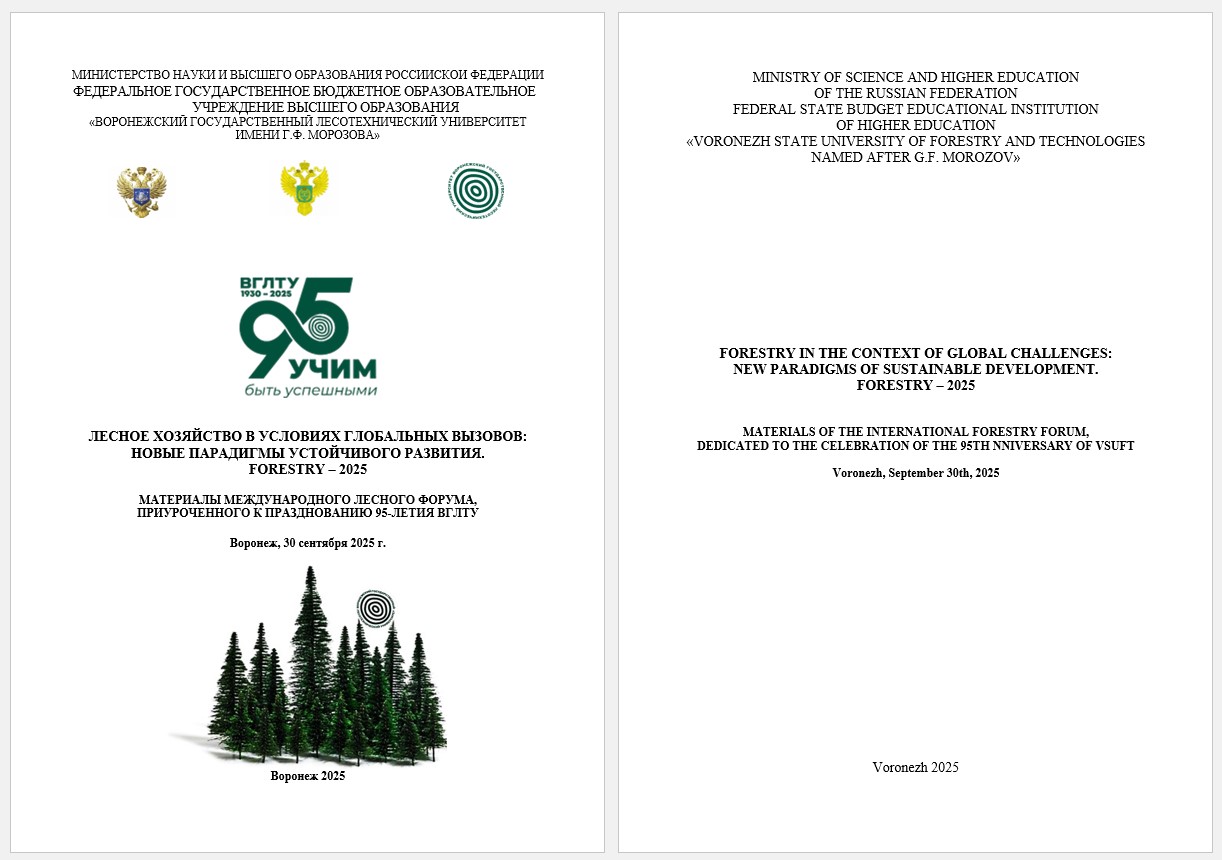Russian Federation
UDC 630.181
UDC 582.475.4
The appearance and surface relief of bark impress with their diversity, determined by species characteristics, plant age, and growing conditions. Considering that the correlation between bark architecture and its response to ecological stresses remains largely unexplored, the distribution of Douglas fir trees was traced based on bark type in a uniform-age stand in the forest-steppe of the Voronezh region. It was established that already at 40-45 years, when differences in bark become noticeable, effective forest management activities can be conducted, and seeds can be collected for selective breeding based on this trait. Trees with cracked bark type should be designated for thinning, excluding them from the prospective seed fund.
Pseudotsuga menziesii, bark type, adaptation, culture, taxonomic traits, introduction
1. Anuchin, N. P. Sortimentnye i tovarnye tablicy. 7–e izd., pererab. i dop./ N. P. Anuchin. – M.: Lesnaya promyshlennost', 1981. –536 s.
2. Brodovich T.M. Akklimatizaciya i adaptaciya duglasii tissolistnoy v lesnyh nasazhdeniyah zapada USSR/ T.M. Brodovich // Lesnoy zhurnal – 1978.- № 4. – S. 33-36.
3. Brodovich T.M. Lzhetsuga (duglasiya) v lesnyh nasazhdeniyah USSR/ T.M. Brodovich // Lesovodstvo i agrolesomelioraciya. – 1969.- Vyp. 16. – S. 99-104.
4. Debrinyuk, Yu. M. Proizvoditel'nost' Pseudotsuga menziesii Mirb. (Franco) v svyazi s formami vida po stroeniyu kory / Yu. M. Debrinyuk // Plodovodstvo, semenovodstvo, introdukciya drevesnyh rasteniy. – 2008. – T. XI. – S. 23-26.
5. Levin I. S. Ocenka razvitiya psevdotsugi Menzisa (Pseudotsuga Menziesii (Mirb.) Franco) v usloviyah lesostepnogo rayona evropeyskoy chasti Rossii/ I. S. Levin// Vestnik Izhevskoy gosudarstvennoy sel'skohozyaystvennoy akademii. –2024. – № 2(78). –S. 73-81. URL: https://doi.org/10.48012/1817-5457_2024_2_73-81.
6. Pastori Z. Sostoyanie i perspektivy ispol'zovaniya drevesnoy kory/Z. Pastori, G.A. Gorbacheva, V.G. Sanaev, I.R. Mohachine, Z. Borchok // Lesnoy vestnik / Forestry Bulletin - 2020. -T. 24. -№ 5.- S. 74–88. DOI:https://doi.org/10.18698/2542-1468-2020-5-74-88
7. Smaglyuk K.K. K voprosu o vysotno-ekologicheskom diapazone lzhetsugi tissolistnoy na severnyh megasklonah Ukrainskih Karpat/ K.K. Smaglyuk // Lesovodstvo i agrolesomelioraciya. – 1971. – Vyp.25. – S. 21-26.
8. Shlyahta Ya.M. Formy duglasii zelenoy po stroeniyu kory v Karpatah/ Ya.M. Shlyahta // Lesnoe hozyaystvo.- 1982. - № 6. - S.40-41.
9. Cardoso. S., Quilhó T. , Pereira H.. 2019. Influence of cambial age on the bark structure of Douglas‑fir. Wood Science and Technology, 53(1). DOIhttps://doi.org/10.1007/s00226-018-1055-5
10. Rosell, J.A. Bark in woody plants: Understanding the diversity of a multifunctional structure. Integr. Comp. Biol. 2019, 59, 535–547.
11. Ruge F., Nicke A., Kohnle U. Douglasien–Naturverjüngung unter Schirm. AFZ–Der Wald. 2019. №17. S. 42-46. URL: https://www.waldwissen.net/en/forestry/ silviculture/forest-regeneration/douglasien-naturverjuengung-kein-sicherer-stand-bei-konkurrenz-und- ueberschirmung
12. Shtein, I.; Gricar, J.;Lev-Yadun, S.; Oskolski, A.; Pace, M.R.; Rosell, J.A.; Crivellaro, A. Priorities for Bark Anatomical Research: Study Venues and Open Questions. Plants 2023, 12, 1985. https://doi.org/10.3390/ plants12101985





